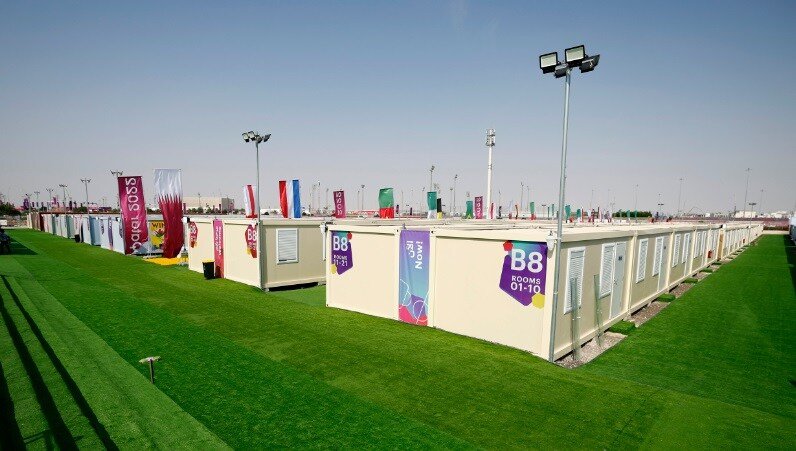Hands up if you are feeling overwhelmed by the whiplash speed of change in today’s modern housing solutions.
It seems the push to innovate and change the way we live in the face of rising costs and environmental concerns is opening up all kinds of alternatives, from small homes to container homes. But is that the only kind of housing solution, or are those small, tiny, niche projects actually growing up into huge projects?
Yes, container homes have evolved significantly from tiny projects to large, elaborate builds. What started as modest, affordable housing solutions are now transforming into expansive, complex structures, offering not only practicality but also luxury and sustainability.

This massive transformation has caught the attention of architects and builders around the planet. They are figuring out ways to push the envelope on what’s possible to do with old shipping containers. Here’s a small breakdown on how this evolution has occurred.
What is the big deal about container homes?
Architects like Adam Kalkin and Peter De Maria got the ball rolling on that. Adam Kalkin built the Old Lady House in New Jersey, which was one of the earliest container homes to get him a lot of attention because he figured out how to make a container home not just livable but bright spacious and stylish. Sean Godsell’s Future Shack, emergency housing, and Peter DeMaria getting the Redondo Beach House built in California kicked off the modern design thing. He really brought the modern design to the forefront with the sleek, minimalist aesthetics.
Adam Kalkin, and guys like Sean Godsell really set the tone for the future because they showed you that container homes could be more than just temporary shelters or makeshift everything. Now these guys are inspiring ourselves and many others to explore and imagine what else can be done from container architecture.
How are container homes getting bigger and better?
As container homes gained popularity, designers began pushing the boundaries of what was possible. A notable example is the 375-square-meter home in Curitiba, Brazil, which features 23 rooms and aims to produce 100% of its own electricity. The shift from small, basic structures to these grand projects shows that container homes are now suitable for families, businesses, and even luxury living.
Other large-scale projects include:
- 21-container home in Williamsburg, Brooklyn, valued at $5.5 million
- Lucia Container Home in South Redondo Beach, California, using 14 containers
- Graceville Container House in Brisbane, Australia, made from 31 containers.
These projects offer not only space but also innovation, such as sustainability features, advanced insulation, and energy-efficient designs.
Can I learn more about these super creative and innovative container home designs?

The Huiini Container House in Mexico that's got a double-height ceiling and expansive windows looks amazing. The Casa Oruga Container Home in Chile that grows out of the hillside is an incredible blending of nature and architecture.
Some other innovative designs include:
- Livingston Manor Container Home in New York, which uses the strength of containers to bridge over a gap.
- 3327 Rutledge Street Container House in Texas, a mini-skyscraper made from containers.
What this all tells you is that container homes are only limited by your imagination. Everybody’s doing all this by how they’re designed and the materials being used in these. Whether you want a little, tiny eco-friendly home or a big, huge, gigantic container estate, you can have it all.
How do container homes stack up in price against traditional homes?
We’re all used to thinking of containers as a cost-efficient alternative to traditional homes. Containers are modular. They assemble quickly, saving on labor and construction costs, spot on. Certain designs of container homes can be much cheaper than traditional homes, especially when you factor in labor and time savings. Of course, if you go crazy with the high-end finishes or do a really complex design, costs can start to creep up. In that case, you’re almost reaching traditional home costs.
A simple container home could run you around $20,000. But those big ones, like that 21-container home they built in Brooklyn, can run into the millions, to give you an idea.
Are there any famous architects specializing in container homes?
Yes, several architects have gained recognition for their work with container homes. Adam Kalkin, who designed the Old Lady House, is one of the pioneers of container architecture. Other names, such as Sean Godsell and Peter DeMaria, are renowned for bringing container homes into the public eye. These architects have shown that with creativity and innovation, containers can be used for everything from small homes to sprawling estates.

These things are growing up from those original small, experimental projects to these big, huge buildings that can rival anything traditional. With all the innovation and sustainability going on, it’s going to be really fun to watch this container home growth. If you pay attention, I think you’re going to see some really wild stuff in the next few years.




